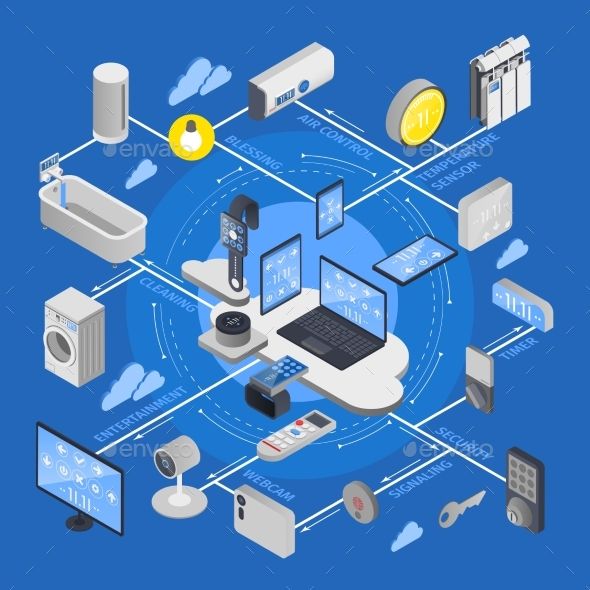5th-generation wireless technology, or 5G, is much more than super-fast internet. Among considerable advances in connectivity developments, it is built to support the exponentially increasing number of connected devices for the Internet of Things (IoT). With the rise in connected devices, 5G is set to become the foundation of the interconnected world. This blog highlights how 5G stands to redefine IoT and allow smarter, more efficient devices to emerge in every domain.

Table of Contents
- Understanding 5G: Not Just Speed
- What is IoT?
- How 5G Enhances IoT and Smart Devices
- Applications of 5G in IoT and Smart Devices
- Challenges Associated with the 5G and IoT Integration
- The Future of 5G and IoT
- Conclusion
Understanding 5G: Not Just Speed

Though commonly used as a catchphrase denoting speedy internet, 5G is a lot more than just speed in terms of factors. It introduces three remarkable features that make it quite compelling for IoT applications:
1. Small Latency: 5G is able to run at such low latencies that it takes less than 1ms for real-time communication between connected devices.
2. Massive Device Connectivity: In terms of extensive device connectivity, 5G is able to support one million devices per square kilometer—leading to real-time communication even in crowded places.
3. Energy Efficiency: 5G networks were designed to be more energy-efficient, which is absolutely vital when it comes to battery-operated IoT devices.
The sum of these features, therefore, gives rise to an infrastructure capable of withstanding the complexity and demands of the current modern IoT ecosystem.
What is IoT?
The Internet of Things implies a network of physical objects or things with embedded sensorial, software, and connectivity capabilities for data collection and exchanges in order to realize automation, remote monitoring, and smarter decision-making.
IoT devices are changing how we interact with our world everyday-from smart thermostats and wearable fitness devices to industrial sensors and connected vehicles. The foundation of reliable and performant IoT can only be realized upon the capabilities brought forth by a networking technology like 5G.
How 5G Enhances IoT and Smart Devices
1. Seamless Connectivity
The capability of 5G to connect numerous devices simultaneously is a linchpin for the IoT ecosystem. For smart cities, thousands of sensors can be used to monitor traffic, air quality, as well as energy consumption, with 5G ensuring intercommunication of these devices without network congestion and reporting real-time data for effective urban management.
2. Real-Time Data Processing
Applications that require instant feedback necessitate low latency. 5G-powered IoT devices allow for the real-time monitoring of patients’ vitals and for remote surgery in healthcare. Also, autonomous vehicles make quick decisions and ensure safety relying on real-time data exchange.
3. Enhanced Reliability
IoT applications often operate in critical environments, where downtime would not be acceptable. 5G’s improved reliability supports uninterrupted connectivity which is adequate for industries like manufacturing, wherein IoT sensors monitor the equipment to prevent costly failures.
4. Edge Computing Integration
The high speed and low latency offered by 5G complement edge computing, where data processing happens as close to the point of origin as possible – as opposed to traditional centralized data centers. This combination reduces the time taken for IoT devices to share, process, and receive data, increasing efficiencies in logistics and agriculture sectors.
5. Energy Efficient for IoT Devices
5G networks are designed with energy-efficient features meant to spool down devices’ power consumption and hence preserve battery power. This is an advantage for remote sensors that have to work for years away from maintenance.
Applications of 5G in IoT and Smart Devices

1. Smart Cities
IoT and 5G technology play a massive role in enhancing urban lifestyle. Real-time data can help regulate the traffic flow and relieve congestion on roads. Smart lighting uses the real-time movement of pedestrians and vehicles in adjusting its brightness to save on energy and costs. 5G also facilitates public safety initiatives with such applications as their surveillance systems and various emergency response coordinations.
2. Healthcare
The healthcare industry has evolved immensely, thanks to 5G-enabled IoT devices. These wearable devices monitor patients’ health conditions and instantly share data with healthcare professionals. Remote surgeries, 5G-driven, allow specialists to perform procedures hundreds of miles away with precision and reliability.
3. Manufacturing
In smart factories, hyperconnectivity reigns with IoT sensors and 5G. Inside, machines coordinate with one another to fine-tune production, anticipate training needs, and directly impact the downtime. Automation is the very basis of Industry 4.0.
4. Agriculture
5G and the IoT integration greatly benefit precision agriculture. Sensors on the fields collect data about soil moisture, temperature, and nutrients, allowing farmers to make data-driven decisions. 5G-connected drones spray pesticides and monitor the crops with greater accuracy.
5. Autonomous Vehicles
5G is critical to an autonomous vehicle’s ability to communicate reliably with another vehicle, an infrastructure, and its cloud systems to share data in real-time; it’s a major requirement for navigation, collision avoidance, and traffic management.
6. Retail and Consumer Devices
In retail, this entails the enhancement of inventory management, personalized shopping experiences, and contactless payment systems using IoT. For consumers, smart home devices-the likes of thermostats, cameras, and voice assistants-bolster 5G network capabilities.
Challenges Associated with the 5G and IoT Integration
While the possibilities of IoT in 5G are stupendous, there are several challenges that need to be dealt with:
1. Costs of Infrastructure – Requires huge investments to build 5G networks based on modern infrastructures. Now consider the towers themselves, which must be in place with antennas and all to offer the benefit of fiber-optics.
2. Security Issues – More the number of devices connected to the network, that means the greater possibility of attacks by hackers. That’s why solid security protocols are necessary in order to protect the data and also follow privacy.
3. Standardization Issue – The problem to be addressed is related to the differences in manufacturing of equipment. Since the devices are made by different manufacturers, they might not always be compatible. Protocols have to be standardized to ensure the interoperability of devices onto the IoT.
4. Power Consumption – 5G is battery-friendly for devices. Sticking to this it forces us to think about the infrastructure undertaking such build-out. All previous generations of cellular technology became ‘power-hungry’.
The Future of 5G and IoT

While 5G is being deployed worldwide, the effect on IoT will only grow. Watch out for these trends:
1. Smart Homes and Buildings
With 5G, smart homes will be more interconnected, offering enhanced automation and energy efficiency. Buildings equipped with IoT sensors will be deploying energy optimization, enhanced securities, and comfortable living spaces.
2. Extended Use of AI
5G combined with artificial intelligence makes IoT devices to be smarter. The AI-based analytics process unimaginable amounts of data produced by IoT devices to provide real-time actionable insights.
3. Birth of 6G
Even though the install base of 5G is still in the quiet phase, work on 6G has already begun. This further phase is said to bring faster speeds, lower latency, and advanced capabilities that can further enhance IoT applications.
4. Sustainability Initiatives
IoT combined with 5G is a powerful driver for sustainability in enabling efficient resource use across agriculture, energy, and transport. Smart grids will, for instance, enhance energy distribution, reducing wastage.
Conclusion
The tight synergy of 5G and IoT is remaking the way we live and work. By providing faster, dependable, and energy-efficient connectivity, 5G opens up the extensive potential of smart devices across various industries-including smart cities, autonomous vehicles, healthcare, and manufacturing-with major repercussions.
As challenges are addressed and infrastructures developed, the 5G-IoT integration will keep shaping a connected, efficient, and intelligent future. The journey has just begun, and the possibilities are absolutely infinite.


Leave a Reply